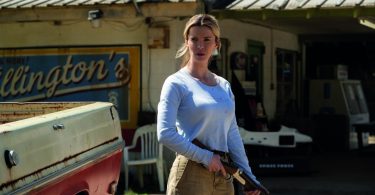A beautifully-wrought retelling of the two lovers separated by society, but equal in spirit.
A beautifully-wrought retelling of the two lovers separated by society, but equal in spirit.
Opening with five minutes of silence and stunningly bleak Derbyshire landscapes, Cary Fukunaga’s Jane Eyre is one of mood. It is the psyche of Jane splashed out onto the screen. Away from the controlled prose of Charlotte Bronte’s Jane, we witness the extent of her otherworldly trepidations and intuitions that are glimpsed throughout the novel.
This is no conservative Austen,“carefully-fenced … with neat borders”, as Charlotte observed of Pride and Prejudice. Here, altered states of consciousness run alongside the everyday, with the film opening at Jane’s delirium after her flight from Thornfield and punctuated with flashbacks to her ghostly encounters in the “Red Room” of her childhood.
Mia Wasikowska plays the quiet intensity of Jane with a magnetic intelligence, shown in expressive eyes and revealing inner turmoil or joy through the slightest facial tremor. She is alive to the preternatural, becoming breathless as she anticipates Rochester’s horse-backed arrival in the woods, and sensing danger when his room has been set ablaze.
Whittling down the plot, the film centres on the love-story, using flashbacks to her childhood to explain her character as it relates to this central theme to great effect and refreshing the well-known tale.
Michael Fassbender’s Rochester equals Mia’s riveting performance, his unpredictable, ill-humoured yet charismatic personality rendering him a little like the Beast in “Beauty and the Beast” as he rampages around his estate. In fact, their drawing-room discussion where they frankly tell the other that they lack beauty but are full of charm, seems straight out of the fairytale, and adds weight to this production which rightly refuses to glamourise the lovers – a mistake some of its predecessors have made. Their eye-locking chemistry of the spirit is more than enough to tell of attraction, reducing the conventional beauty of Blanche Ingram to something vapid.
The threat of semi bad-boy Rochester is clearly depicted on screen with his taunting of Jane through his attentions to Blanche. A scene where he whispers, “I could bend you with my finger and thumb like a reed,” also hints at latent violence and gestures to Wide Sargasso Sea with its interpretation of Rochester as brutal, driving his wife Bertha Mason to become: “the madwoman in the attic.”
Indeed Mia’s ethereal Jane is possibly too sweet and accepting, compared to the internally fiery, restless force that Bronte suggests. Her name Eyre, suggesting “spirit of the air,” is more of the fairy and less of the devilish in Mia’s performance which makes Rochester’s moments of cruelty more disturbing. Jane is more of a challenge herself in the novel, but, even without the more witchy aspects, Mia still enchants.
With a pared-down plot, the film gets rid of more troublesome aspects to the book, such as St John’s love for Rosamund which complicates his marriage proposal to Jane, and the fact that the novel finishes, not on affirming love (where the film ends), but on the semi-disturbing revelatory passage of St John on his deathbed. The effect is, overall, very powerful, only omitting one scene perfect for the camera – that of Jane awaking to the vision of Bertha trying on her veil on the eve of her doomed first wedding.
Given such a small space against the love-story, the rest of the cast still shines strong, with powerful performances from: Jamie Bell as St John, Sally Hawkins as the tyrannical guardian Mrs Reed, and Judi Dench as the kindly Mrs Fairfax, who injects comedy into the predominantly grey, brooding setting.
The film does away with the final chapter of the novel, rejecting the famous, “Reader, I married him,” for a quiet ending that is in keeping with a production focused on the internal workings of the mind, rather than one of societal conventions. No weddings are needed to reinforce everything being tied up, Austen-style, instead the atmospheric magic of Bronte’s Jane Eyre is rendered and shows that a framed shot can tell a chapter of words.








